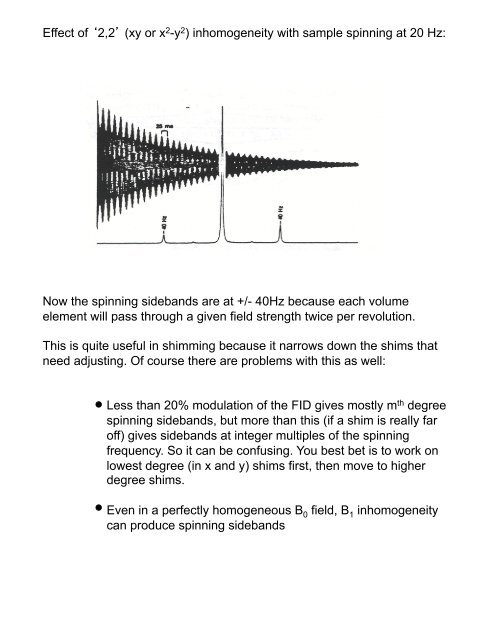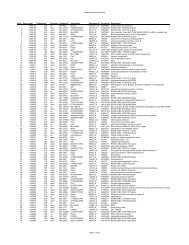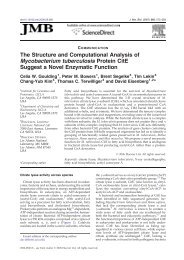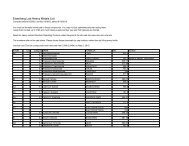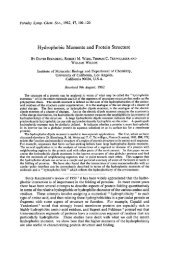Shimming: Theory and Practice - UCLA-DOE
Shimming: Theory and Practice - UCLA-DOE
Shimming: Theory and Practice - UCLA-DOE
You also want an ePaper? Increase the reach of your titles
YUMPU automatically turns print PDFs into web optimized ePapers that Google loves.
Effect of 2,2 (xy or x 2 -y 2 ) inhomogeneity with sample spinning at 20 Hz:<br />
Now the spinning sideb<strong>and</strong>s are at +/- 40Hz because each volume<br />
element will pass through a given field strength twice per revolution.<br />
This is quite useful in shimming because it narrows down the shims that<br />
need adjusting. Of course there are problems with this as well:<br />
Less than 20% modulation of the FID gives mostly m th degree<br />
spinning sideb<strong>and</strong>s, but more than this (if a shim is really far<br />
off) gives sideb<strong>and</strong>s at integer multiples of the spinning<br />
frequency. So it can be confusing. You best bet is to work on<br />
lowest degree (in x <strong>and</strong> y) shims first, then move to higher<br />
degree shims.<br />
Even in a perfectly homogeneous B 0 field, B 1 inhomogeneity<br />
can produce spinning sideb<strong>and</strong>s


